Species
{{start}}
{{end}}
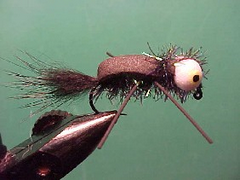
{{+1}}Booby beetle – Chatto’s original{{-1}}
{{start}}
Boobies are a fantastic bass fly when fished on the surface but occasionally they hang so low in the water they get a bit hard for me to see. To overcome that when seeing the fly is necessary I added a back of 2mm closed cell foam - works like a dream. This is undoubtedly my favorite bass fly.{{end}}
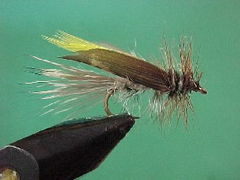
{{+1}}Chatto’s yellow winged hopper{{-1}}
{{start}}
As the name implies this hopper is my representation of the natural of the same name. Its tied in the same way as a stimulator except that a yellow under wing and feather slip wings replace the deer hair wing of the stimulator. It's a good hopper pattern to tie on because it floats in the surface film much the same way as the unfortunate natural does and it is reasonably visible.{{end}}
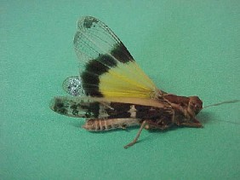
{{+1}}Hoppers{{-1}}
{{start}}
Whilst there are over 2000 species of Grasshoppers and Locust in Australia there are really only three "hoppers" that are of significance to fly fishers.{{end}}
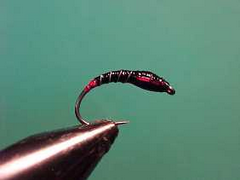
{{+1}}Black buzzer{{-1}}
{{start}}
When browns and rainbows are feeding on hatching midges at the exclusion of all else it pays to have a few buzzers in your kit. This pattern has proven itself to be readily accepted in many countries.{{end}}
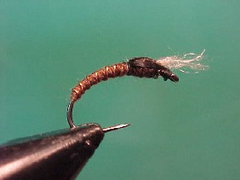
{{+1}}Chatto’s emerging alpine buzzer{{-1}}
{{start}}
When browns and rainbows are feeding on hatching midges at the exclusion of all else this buzzer chironomid pattern and when a little lead is added for weight in the tie I find is a good choice for point fly in a team of three flies.{{end}}
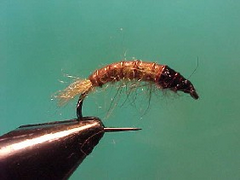
{{+1}}Foetal caddis grub{{-1}}
{{start}}
My preferred colours are light brown, light olive and hares ear each with slightly darker thoraxes and sand with a touch of orange or pink. All are tied with olive backs and heavily weighted so that they get down to where the fish are sitting.{{end}}
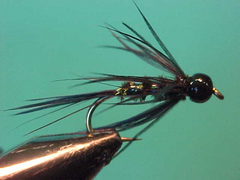
{{+1}}Bead head spiders{{-1}}
{{start}}
An important part of my bead head fly box. I am a firm believer that when fishing rivers you have to get down to where the fish are holding and also that flies particularly in faster running water should include "hot spots". These flies satisfy both these requirements.{{end}}
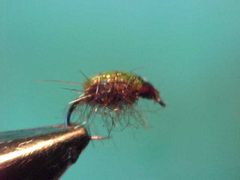
{{+1}}Snail – Chatto’s version{{-1}}
{{start}}
Snails are a food source for trout throughout the year. Having said that they are often overlooked by fly fishers. In colours imitating the naturals in the area to be fished they can be slowly twitched along the bottom or around the weed beds with great results. They are also a good ambush fly for trout foraging the margins. My standard choice of colours is a mottled brown and dark olive.{{end}}
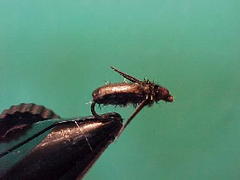
{{+1}}Corixia / back swimmer{{-1}}
{{start}}
Given the similarity of form and function both of these aquatic bugs can be represented by the following fly. This fly is best fished on a floating line that has been greased to within a meter of the fly or under a dry fly. It generally works well just sinking in the water column or moving naturally with the water current. If unnoticed try a couple of short figure of eight strips punctuated by a long pause to represent the natural swimming action of both bugs or a gentle lift to mimic "the natural" rising to the surface to breath.{{end}}
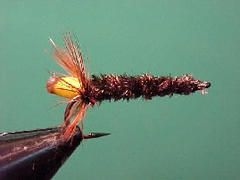
{{+1}}Stick caddis – Chatto’s tie{{-1}}
{{start}}
This is the lava of a Caddis fly (or Sedge) and is common from September through to December particularly in the flooded margins of lakes. Can be fished relatively static as a prospecting fly with a very slow retrieve or used as an ambush fly when polaroiding.{{end}}













